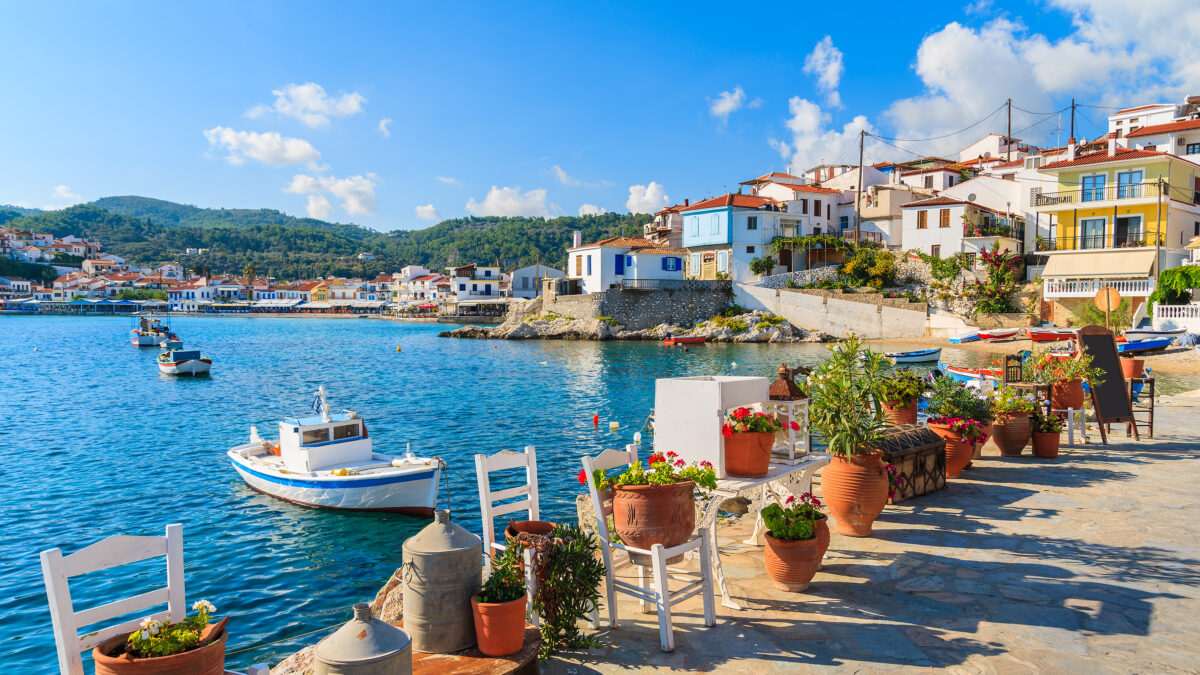Samos is an island in the Eastern Aegean. Administratively, it belongs to the North Aegean Region. Its capital, Vathy, faces the Turkish mainland. Thanks to its strategic position, Samos has been settled since antiquity and has a wealth of remarkable monuments to show for it, such as the Heraion, a sanctuary dedicated to Hera; the Ancient Theatre; and the Tunnel of Eupalinos, a true marvel of ancient engineering that served as an aqueduct.
Samos is a verdant island with impressive vegetation. It is also blessed with striking beaches, crystal-clear waters and, of course, important historical and archaeological sites. The island’s profile is rounded out by Vathy, its amphitheatrically constructed traditional settlement and main port, with its Pythagoras Square; Kokkari with its multi-coloured houses; Pythagorio, the seaside settlement named after Pythagoras, built on the site of ancient Samos; and the student town of Karlovasi.
The island truly does not lack for swimming options: bays both large and small, sandy expanses like Psili Ammos or pebble beaches like Tsampou, bays accessible by footpath or boat like Mikro and Megalo Seitani, beaches with turquoise or deep blue waters, beaches fringed with lush vegetation or stark stone, are sure to satisfy even the most demanding visitors.
Dominated by imposing mountainous terrain practically overgrown with impressive nature, the island boasts incredible hiking trails. Taking a trip down them, visitors will encounter caverns, canyons, torrents, waterfalls and wetlands, a perfect opportunity to admire the island’s flora and fauna at its most authentic. And Samos truly has no shortage of hiking trails, where visitors can immerse themselves in nature.
Cuisine
Samos has been renowned since antiquity for its abundance, boasting a wealth of quality local products – fruit-bearing trees, olive groves and vineyards. A plethora of products are made locally and used as ingredients in the island’s unique dishes. Indeed, it is no surprise that the concept of diet was a major part of Pythagoras’ teachings.
Today, the olive groves of Samos produce excellent olive oil, while the local honey is a distillation of all the aromas and flavours of the island. But perhaps the most well-known product of Samos is Muscat, the home-grown variety of sweet wine that is famous for its perceived healing properties.
In addition to its wine, Samos also produces souma, an aromatic spirit that is reminiscent of tsipouro, as well as local and exceptionally flavourful, ouzo.
Samos also boasts a time-honoured tradition in dairy products, especially cheese products, made from cow’s, goat’s or sheep’s milk. Local cheeses include the creamy armogalo, anthotyro and graviera, served either on their own or in salads or pies, or with the island’s dishes.
The local cuisine also has many meat-based dishes. Examples include lamb or goat saddle lathered in sun-dried tomato paste and stuffed with rice, offal with herbs, and keskeki, a meat dish with wheat, onions and olive oil, slow cooked in a large pot.
Seafood dishes are also available, most notably small fish cooked in a frying pan, covered in onion rings, or tsiladia, a type of fish stew most commonly prepared with bogue, which is cooked and ‘baptised’ in a red sauce mix.
The island’s cuisine is rounded out by chickpea fritters (revithokeftedes), onion dolmades, stuffed zucchini blossoms, green pies with locally sourced herbs and aromatics, stuffed vine leaves of Samos (giaprakia), as well as traditional fritters made with eggs, flour and yeast. Finally, some of Samos’ most renowned sweets are burek stuffed with pumpkin and cinnamon, and katades, a local spin on kourabiedes.
How to get there
Samos is served by ferry from Piraeus and Kavala.










